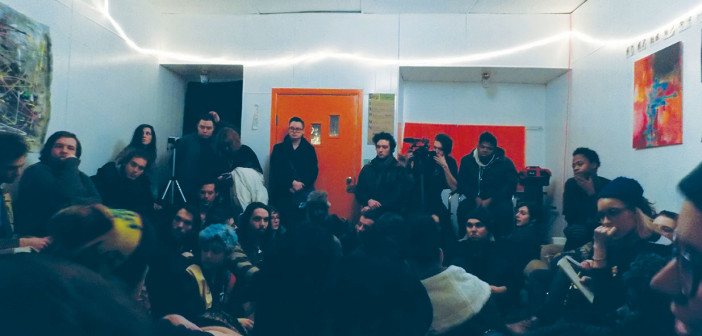Chicago’s underground music scene is something that is often overlooked by North Central College students. However, the reality is that Chicago is just a train ride away.
The Chicago underground music scene has grown over the years. Nationally known as the D.I.Y. Music/Art scene, the artists record the music themselves, as well as organize and put on shows. Those in the D.I.Y. scene form collectives, and Chicago is no exception. Chicago’s D.I.Y. community can be described as a general art collective with various branches. These D.I.Y. venues are about promoting all kinds of art.
Maurice Dixon, who is a sound technician at a D.I.Y venue known as “The Dojo,” said that D.I.Y. has also become a second home for the LGBTQ community.
“People can be whoever they want to be and not be judged for it,” said Dixon.
He also mentioned that venues such as the Dojo and Dollhouse D.I.Y. emphasize that they are safe spaces for this community and that they are rated by the Feminist Action Support Network. The Dojo is rated an olive level space, which means that, “oppressive and harmful behavior is not welcome in this space,” according to the standards listed on Feminist Action Support Network’s website.
Mylo Reyes, through the art collective, Hoist, organized an event on Jan. 23, inside a clothing store in Uptown. Reyes said events like his are “really important for artists and for the community.” Reyes said that Hoist’s first show went very well.
All of the actual stock was moved to the basement, and a small stage was near the door. Relocation of valuables is common during shows, especially at house shows. Residents open their homes up to strangers to celebrate art at house shows. The amount of people entering these spaces is somewhat controlled, because the address is almost never openly posted. On occasions where it is posted, it is posted very close to the event date.
To access venues like the Dojo, the 2040, the Commune, Eco or Hostel Earphoria, a person must message the host for the address. The system is, in theory, a way to keep authorities from finding out about these underground events.Because there is usually no police involvement, the sale of alcohol is unregulated. Venues sometimes operate bars during shows, but often also allow a BYOB policy.
Recently, venues have organized in order to brainstorm ways to make the scene better. One branch of the scene’s monthly town hall meeting was located at the Dojo on Thursday, Jan. 21. At these town hall meetings there is a potluck meal prior to the actual meeting. After the potluck, the room quickly fills. People sit on any patch of rug they can find.
There was a system to manage direct feedback to topics, but there were several people with direct feedback for every topic. Although this is helpful for the D.I.Y. community to have a large pool of resources to draw from, the number of people attending the meetings can make these meetings seem unmanageable.
Public address system sharing was one topic that was discussed, as well as how to organize and fund a network for sharing these public address systems.
“Punks go through P.A.’s quicker,” said Bert Twentyforty during the P.A. discussion. Other discussions suggested developing a D.I.Y core of engineers that could volunteer to do sound for events, police watchdog training and alternate venue locations for a festival known as Second Floor Rear.
Another major topic at January’s Townhall meeting was whether or not the scene should leave Facebook, and what the best way to do that would be. With over 9,000 members on a local Chicago D.I.Y. Facebook group, is the D.I.Y. scene in Chicago too big? Egon Schiele, who runs the notdiychi.com event website, feels that the scene is “at its inception,” and that it has “a lot of room to grow.”

